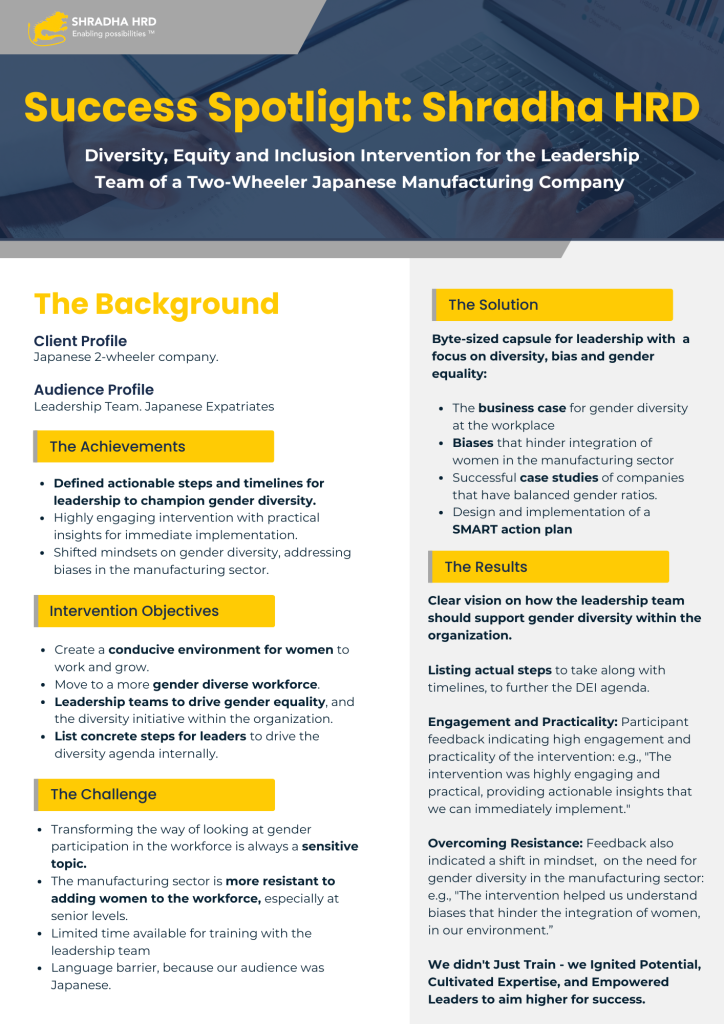
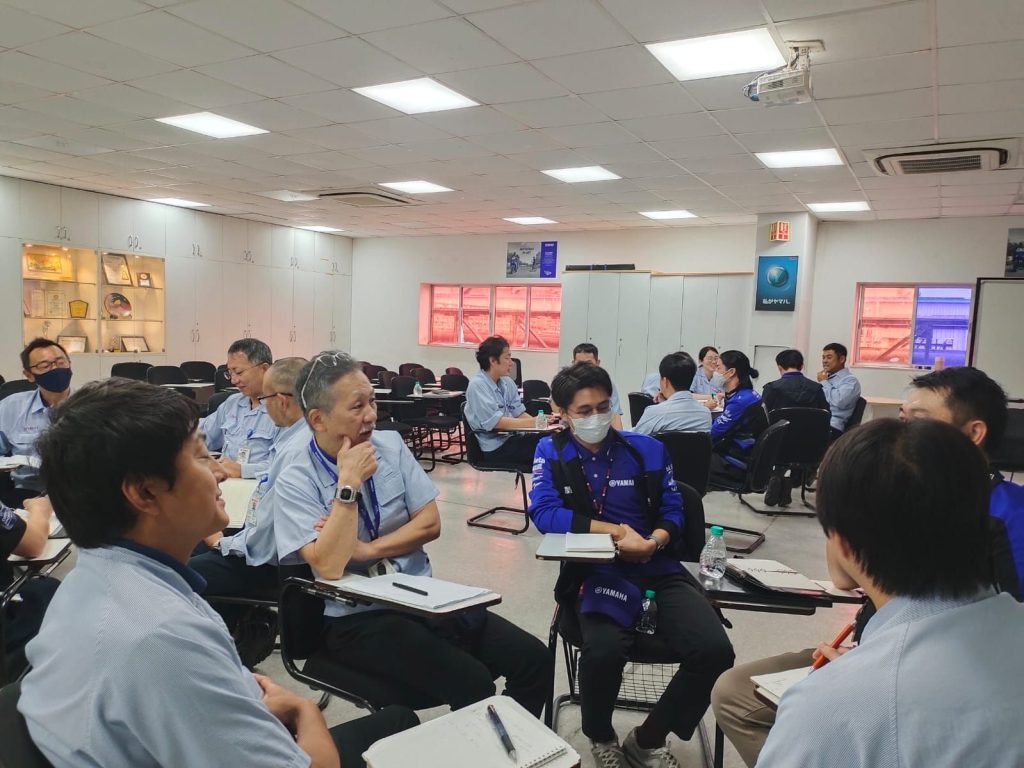
The human mind is capable of wonderful things. All it needs is the correct stimulus to unlock its latent potential. That’s the insight that drives us every day at Andragogy; as we go about exploring the limits of excellence and Enabling Possibilities in everything we do.



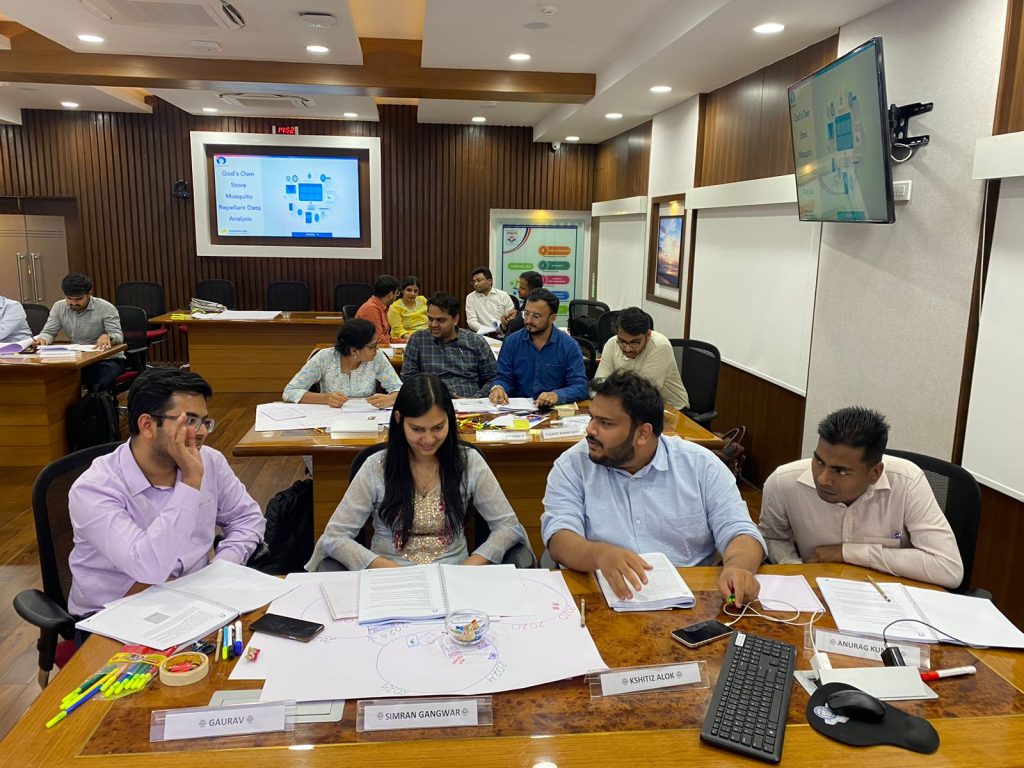
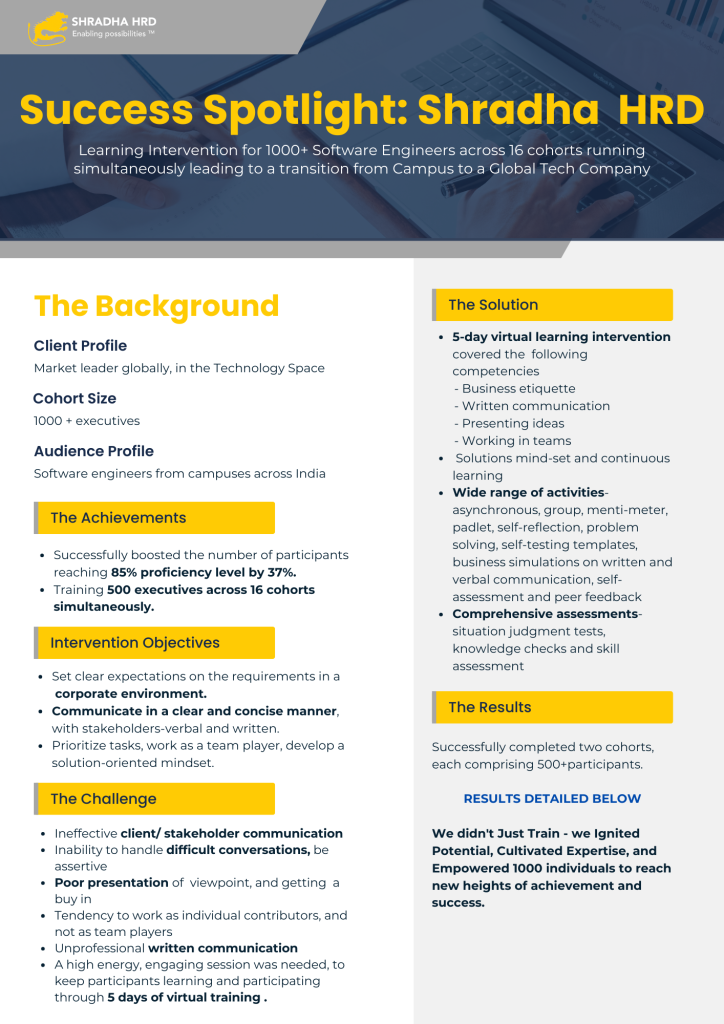
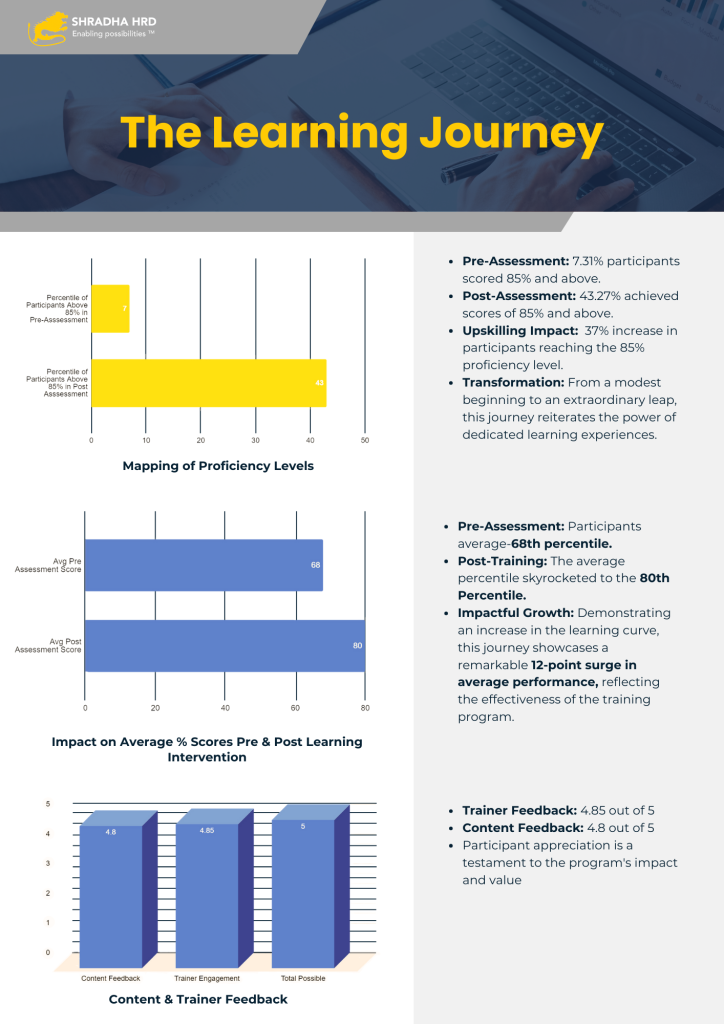
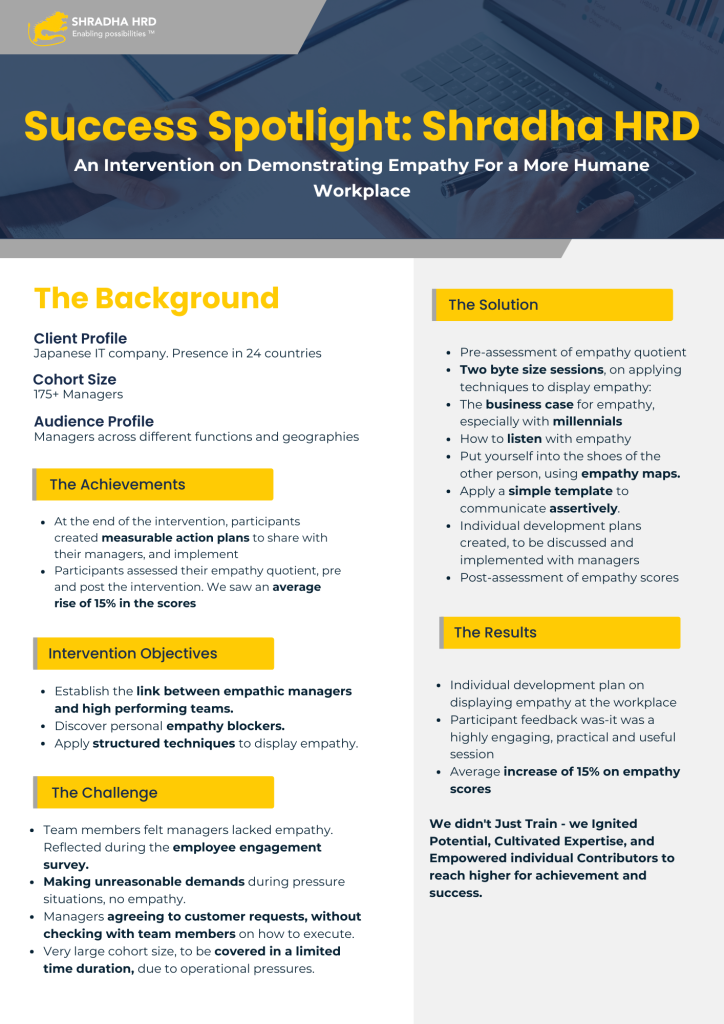
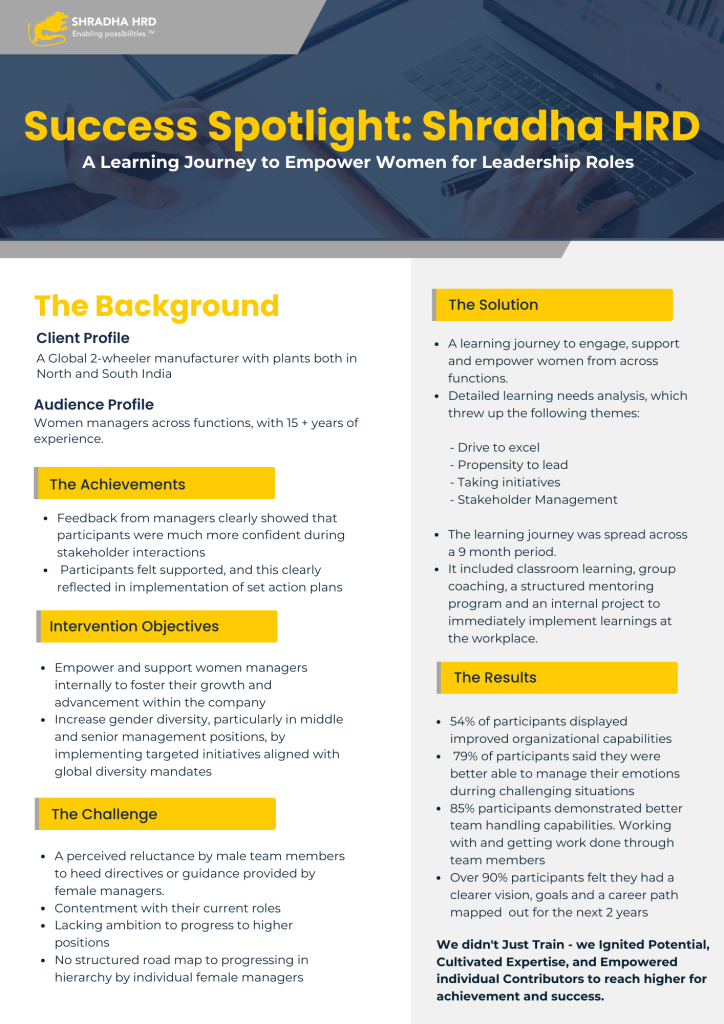

The Landscape:
Business Leaders at an Oil and Gas company felt the need for a formula that would help them drive growth and productivity at the workplace. Additionally they felt the need to help them discover inner peace and maintain an equilibrium, even during difficult, turbulent times and challenging situations.
The Challenge:
Leaders that lead departments and divisions are expected, not only to drive results; they need to be able to take a long term view, think holistically, create robust systems and fire fight when there are unexpected challenges that come up. Everyday pressures to perform, grow and maintain your inner calm is a tall ask, from any one person. This requires a slightly unconventional approach, a transformation of the inner self, to lead and grow.
The Solution:
We conducted a 2 day program for the leaders which had thought provoking themes like-Why is #Spirituality becoming the cornerstone for success in #businessleadership? How can we achieve inner #happiness and external #success at the same time?
The program tackled the complex subject of #Spirituality and why it is paramount and essential today for #business leaders who lead big corporations that impact people’s lives in multifarious ways.
Delineating from #religion, the program opened up vistas of #selfempowerment and purposive working in today’s world.
Some themes we explored during the program were:
1. What is the importance and benefits of #spirituality for leaders that sit at the head of organizations?
2. How can we find inner #peace and yet gain external #success?
3. How do we discover our true #purpose in life, work towards our goals with passion and discipline
Using the book #Cipher as a guide, we reflected and discussed laws that govern our lives and help us become more creative, more objective and above all more aware.
The Impact:
By the end of the program, participants had a clear roadmap on how to reconcile these tangential objectives-inner evolution and outward success- Both equally critical for all of us to be truly #HAPPY.
A personal blueprint for happiness and success!!!!!
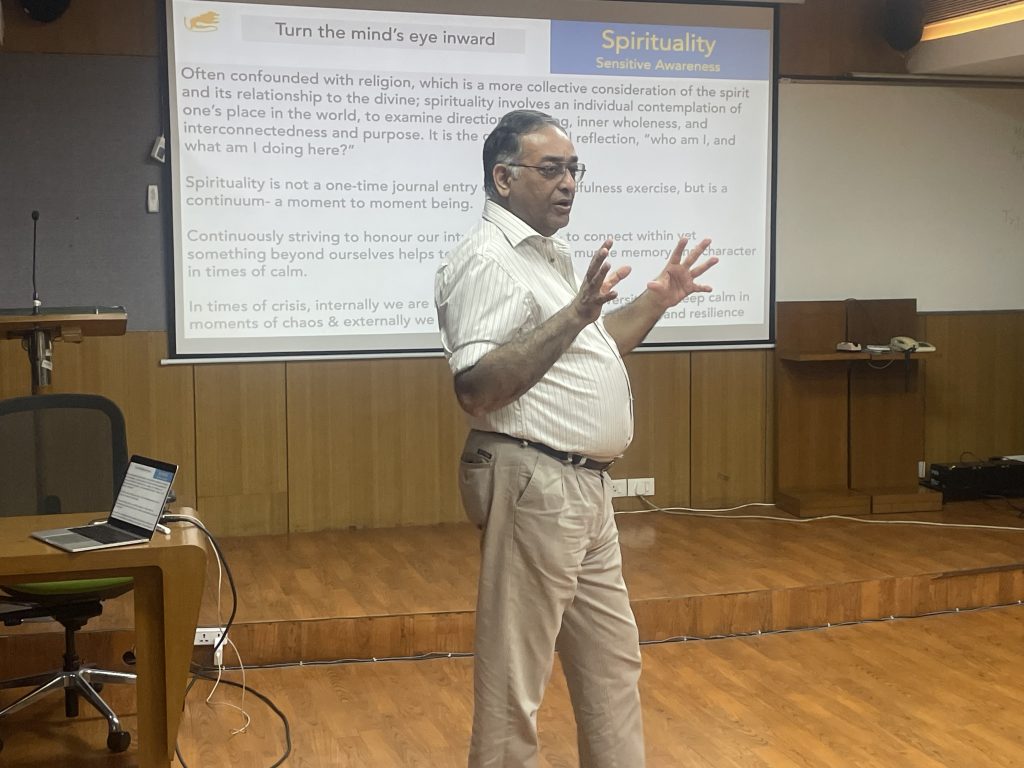
The Landscape:
Our client is one of the largest real estate asset management companies in the world. They are set to double their Assets under Management (AUM) in the next 3 years. This program was for middle managers from across functions, in the organization.
There was a clear need identified, for managers to be able to move away from a transactional approach to a more strategic approach. Step away from everyday execution and look at the Bigger Picture.
The Challenge:
The organization was growing very fast, in an ever-changing landscape. This required managers to be able to look at the bigger picture and then take their decisions. There was a tendency with managers, to remain bogged down
at the execution stage and not be able to move to step back and look at the situation holistically.
The Solution:
The focus of the program was to give participants the necessary tools to look at the situation strategically, view the big picture and not get stuck in the fine print, the details. Using these tools, apply them to everyday situations at the workplace. We worked not just at the concept level but at the execution too.
The Impact:
Participants were able to apply “Big Picture Thinking” tools to challenging situations at their work. It allowed them to step back, reflect and map out a clear action plan for implementation. The program gave participants a safe space to review mindsets and strategize on how to implement the actual change on thinking strategically and looking at the big picture before taking decisions.
The Landscape:
As part of their #DEI initiatives, our client who is a global 2 wheeler manufacturing company wanted to encourage, support and facilitate the growth of the women managers. The company has a global mandate to improve the gender ratio, especially at middle and senior management positions. The vision was to provide support to women internally, instead of hiring external resources, to meet the mandate.
#Womenempowerment, in every sphere of life, is a passion and a priority for us at #ShradhaHRD. We are a women dominated organization.
Our Solution:
To create a #learningjourney to #engage, #support and #empowerwomen from across functions.
This began with a detailed learning needs analysis, which threw up the following themes
1. Drive to excel
2. Propensity to lead
3. Taking initiatives
4. Stakeholder Management
The learning journey was spread across a 9 month period, which includes classroom learning, group coaching, a structured mentoring program and an internal project to immediately implement learnings at the workplace.
Program Impact:
Participants and their managers felt they had more confidence in their abilities to perform. They were able to delegate more efficiently. A key change that was noticed- increased skills to manage teams better and ask stakeholders for what they required, clearly and with confidence.
We are #committed to being a part of this fabulous journey, with these super talented women and helping them reach their #potential.
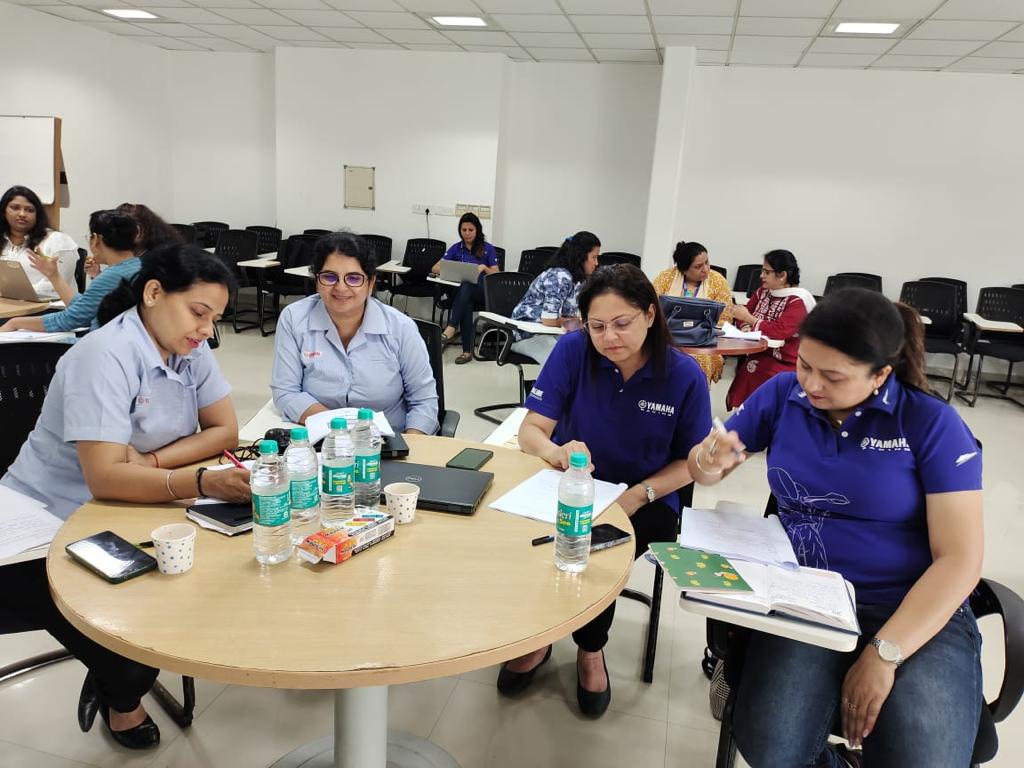

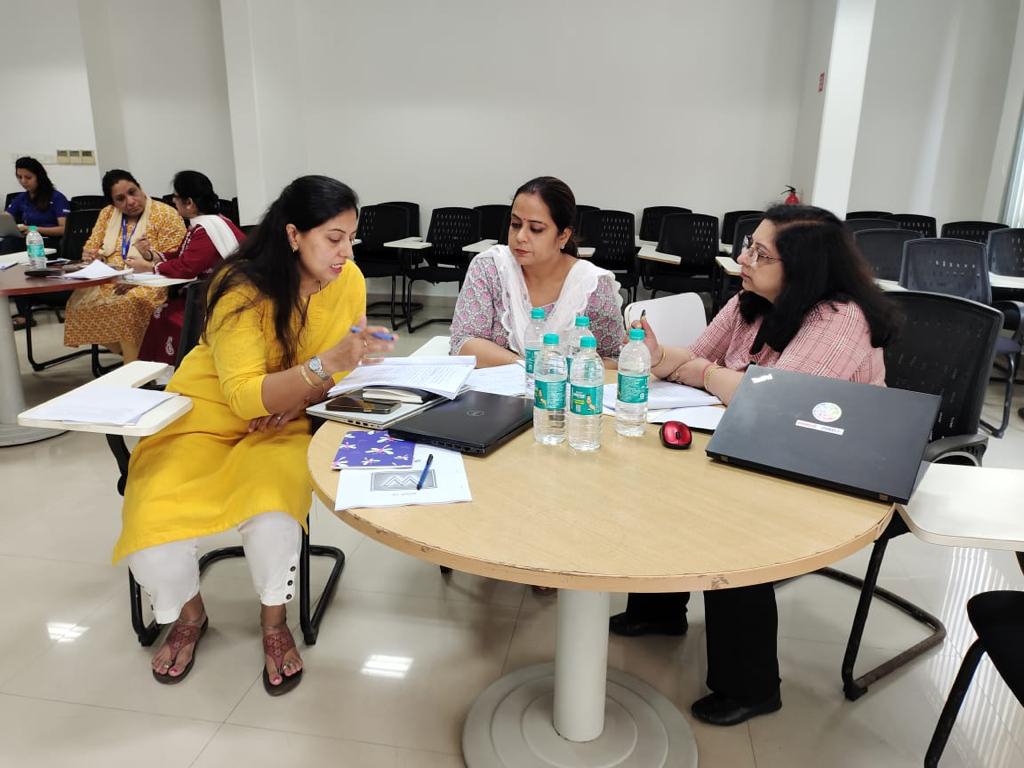
The Landscape: Our client has a large amount of age diversity in their workforce. A mix of Gen X, Gen Y and Gen Z.
The management style of the legacy and tenured managers is very command and control. Gen Z is looking at a more participative, empathetic and engaged leadership style. They are eager to learn and want their managers to actively work with them on this journey.
The Solution: Through a simulation-based approach, managers identified specific issues their team members needed to be coached on. A structured coaching plan was prepared and implemented, first in the training room and then real-time at the workplace.
The themes that were covered:
1. Fundamentals of coaching
2. Prepare for a coaching conversation
3. Use the GROW model to coach
4. Drive productivity through coaching conversations
Program Impact: Participants were sensitized to the fundamental principles on using coaching as a tool, to drive productivity and engage with teams. They used this knowledge and awareness to initiate coaching conversations with members and drive growth.
The Landscape:
A global alcohol and beverage company had a clear vision to improve their gender ratio, especially in their sales teams. The first step was to make their teams aware of their biases and manage them, so decision making is objective. Building awareness on unconscious biases is critical not just to increase diversity in organizations, it has a compelling business case too. It directly impacts the bottom line of businesses and has significant implications for hiring, promotions, getting key assignments, building networks and general morale of the workforce.
The Solution:
An interactive discussion-based workshop, where the methodology was largely self-reflection and insight into personal biases was conducted. This was followed up by a structured personal action plan on managing the biases identified and moving towards more objective decision making in all spheres of work. The themes covered during the program were:
1. The business case for gender diversity
2. Origins of unconscious biases
3. Different kinds of biases and how they manifest
4. Techniques for building awareness of biases and managing them
5. Personal action plan
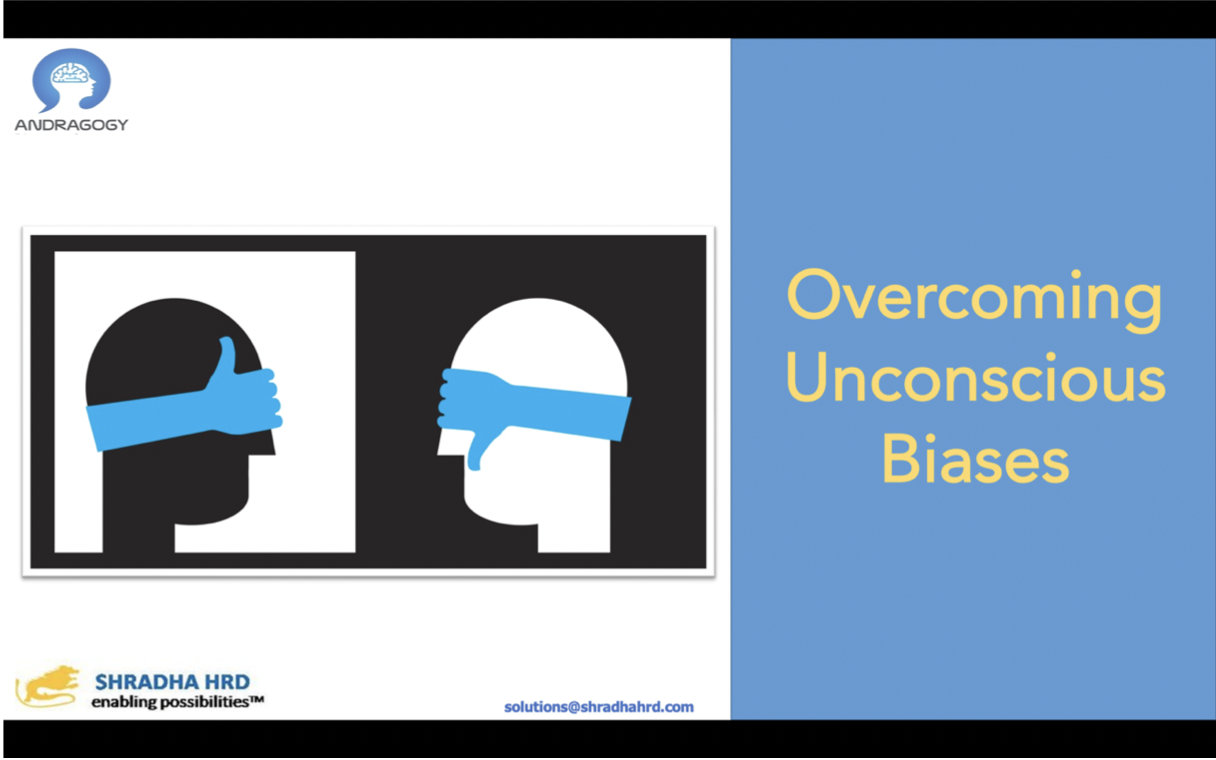
The Landscape:
The transition from an individual contributor to a First Time Manager is considered the most challenging one in an executive’s career. The endeavour is to empower managers to manage their individual KRA’s and to engage/manage/grow teams and drive results. Shradha HRD just completed a learning journey for 392 first time managers for a global IT/ITES company.
The Solution:
Through extensive consultations with stakeholders and participants, we identified the critical themes for the group. The program was contextualized and a robust mechanism to assess effectiveness incorporated This was a 7 part intervention, spread across 3 months.
The areas that were identified as challenging and we particularly focused on were:
1. Engaging with team members
2. Nurturing talent
3. Conducting performance appraisals
4. Giving feedback that leads to growth
5. Difficult conversation
6. Creating a psychologically safe environment
7. Coaching and mentoring
Our experience across different industries has thrown up similar data. First time managers struggle, not so much with achieving targets or completion of individual work assigned to them. Their main challenges stem from their inabilities to engage and communicate with team members, manage teams and influence stakeholders.
The Landscape: A global tech company has a unique diversity and inclusion program where they are hiring, training and integrating people with disabilities into the organization.
A need was felt to make the hiring process easier and more humane for people with disabilities.
The Solution:
Shradha HRD ran a series of programs for the talent acquisition team where we focused on the following themes:
1. How to make the process comfortable for the candidate, given the nature of disabilities
2. Managing our biases and focusing on the candidates’ ability, instead of their biases
3. Being a champion of candidates with disabilities within the organization
A touching story that a recruiter shared during the program, summarized #beinginclusive.
At a career fair, this recruiter was interviewing people with disabilities. He said he was very impressed with one of the candidates with Orthopedic disabilities. She was bright, cheerful and well spoken. The candidate however, was not a fit in the Tech industry, but was extremely passionate about baking. This came out in the half an hour long conversation the recruiter had with the candidate even though he knew he was not going to hire her.
He said, people with disabilities have been through so many rejections, that is important to listen to their stories. They really need that. The passion of this candidate stayed with the recruiter. He began reaching out with in his network, to find someone that was looking for talent in the baking space. Someone did emerge. And there was a happy fit-both for the organization and for the candidate. Being inclusive is going beyond the buzz words, its truly reaching out. The pleasure of having helped, the pleasure of giving, is special and a reward in itself.
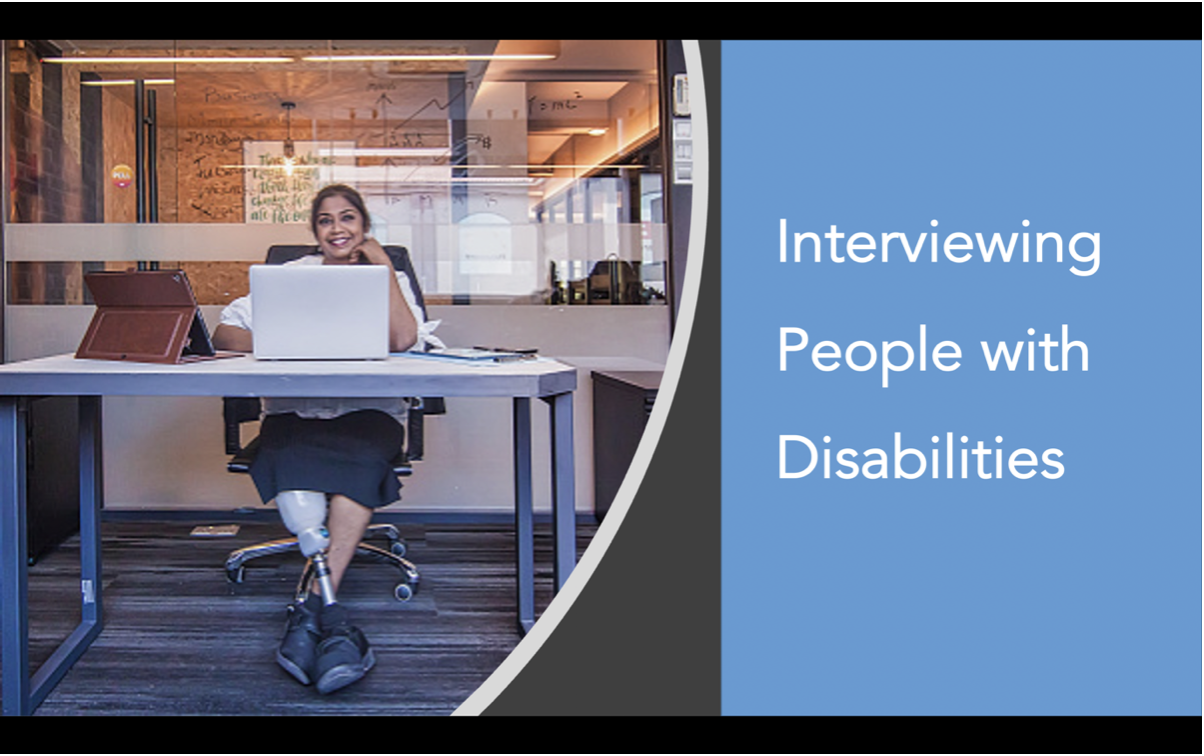
The Landscape:
CII, the largest industry body in India, has a women’s network with professionals from different domains, entrepreneurs, and home makers. The objective of the mentorship program was to leverage the experience within the member base and help younger women upskill, upgrade and have a support structure through a senior member in their line of work.
We worked with the Thought Leadership team at CII-IWN on the Second Mentorship Program for Women. This was a group of talented women, from extremely varied domains (entrepreneurs, professionals, homemakers starting ventures and leaders in their domain), who are committed to their growth and the growth of others.
The Solution:
This was a six-month long journey conducted, based on mutually agreed on goals by the mentor and the mentee. A clear structure for the journey was provided and overseen through regular check-ins with both mentors and mentees. The clearly defined structure and regular touch points with the experienced support team helps mentors that have the domain knowledge but not the expertise of running mentorship programs, conduct the program with ease and realize the set objectives and goals for the program.
This program is one of the best examples of women supporting women and creating an ecosystem for growth.
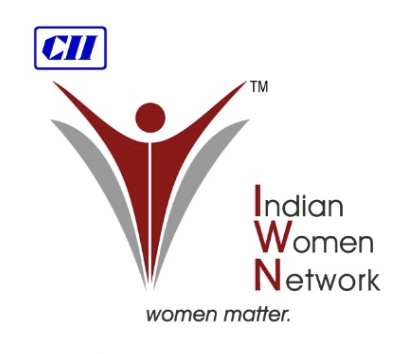
Over the last 20 years, #communication is a theme we have run in so many different sizes, shapes, forms and for participants ranging from fresh entrants to the workplace to senior leaders. It’s a critical competency that is needed, across levels. The forms may change, from communicating with peers to coaching direct reports; the relevance remains unchanged

Shraddha HRD recently concluded a program series on #Communicating with Impact for a Pharma giant. Over the last 2 years, a bulk of our interventions has been conducted virtually. However, our personal experience has been, for topics that require reflection, learning by doing and group work, nothing beats an in-person event.

Post the program, some thoughts the participants shared, was the real-life relevance of the case studies, exercises and simulations that we conducted.
Our experience of having trained on the “communication” competency over 25 years helps us add value to participants across sectors and levels, by contextualizing the learning material and sharing best practices from a cross section of industries.

The Landscape: Luxury is an #experience. How do you give participants an experience of #luxury, sitting in a training room? It was an interesting challenge for us, as learning partners to a leading #AlchoholBeverage company. The end result was an #experientialprogram that provided participants a wholly #immersive experience of the luxury Universe.

The #keyasks for the program were
1. To get key account managers to sell an #experience and not a product. While selling luxury goods, you cant really sell on price, it’s the entire experience the consumer buys. This is often a challenging mind-set for sales people to move to.
2. Move to #meaningfulengagement with consumers; ultra high net-worth consumers. This can be done by reflection on the mind-set, preferences and buying behaviors of HNI consumers
3. A transformation from transactional selling to #consultativeselling: being trend setters instead of just followers.

It was a fabulous experience putting the program together & executing it. The faculty for the program were industry stalwarts & were able to curate two fabulous #immersive experiences on luxury, which went beyond, just classroom learning. This added the extra bit required to move learning to an #experience
When participants stay on, much beyond designated training hours, asking questions on how to perfect their art, you know you the learning experience has been #successful
This is a pressing need that is emerging, given the increasing digitization at work and the large amount of data that is generated. How do you help others make sense of this data.

An effective and time-tested strategy we use for this program:
1. What is your key message?
2. How do you drive home this key message?
3. Build a concise and compelling narrative using elements of business storytelling
The most important ingredient is to strategize, build and practice practice practice
We spent weeks and months putting the data together but how many minutes do we spend on structuring the narrative.
Data informs, stories persuade!!!!!!
The Landscape: Vision 2025 for this leading Fibers manufacturer, included the critical competency of “Emotional Intelligence”. There was a need felt to move away from the “command and control” system to a more “collaborative” system. Behaving and Demonstrating Emotional Intelligence was regarded as critical, giving the constantly changing environment and the advent of the millennials and Generation Z, into the workforce

The Solution: Shraddha HRD designed a learning intervention, spread over 6 weeks. Participants went through a learning intervention covering the different aspects of emotional intelligence through virtual instructor led sessions. This was followed up with out of class reflection on demonstrating emotionally intelligent behaviors and implementing action plans.
Some themes that were covered:
What is the relevance of #emotionalintelligence in a manufacturing environment? Is it a competency that should really be top of the heap? Isn’t operational excellence far more important and if the command-and-control structure has worked well till now, why change?
There is a thought process that emotional intelligence is far more relevant for the services sector. A detailed learning needs analysis clearly showed that managers today, irrespective of the sectors they work in, need to display emotionally intelligent behavior, with their teams.
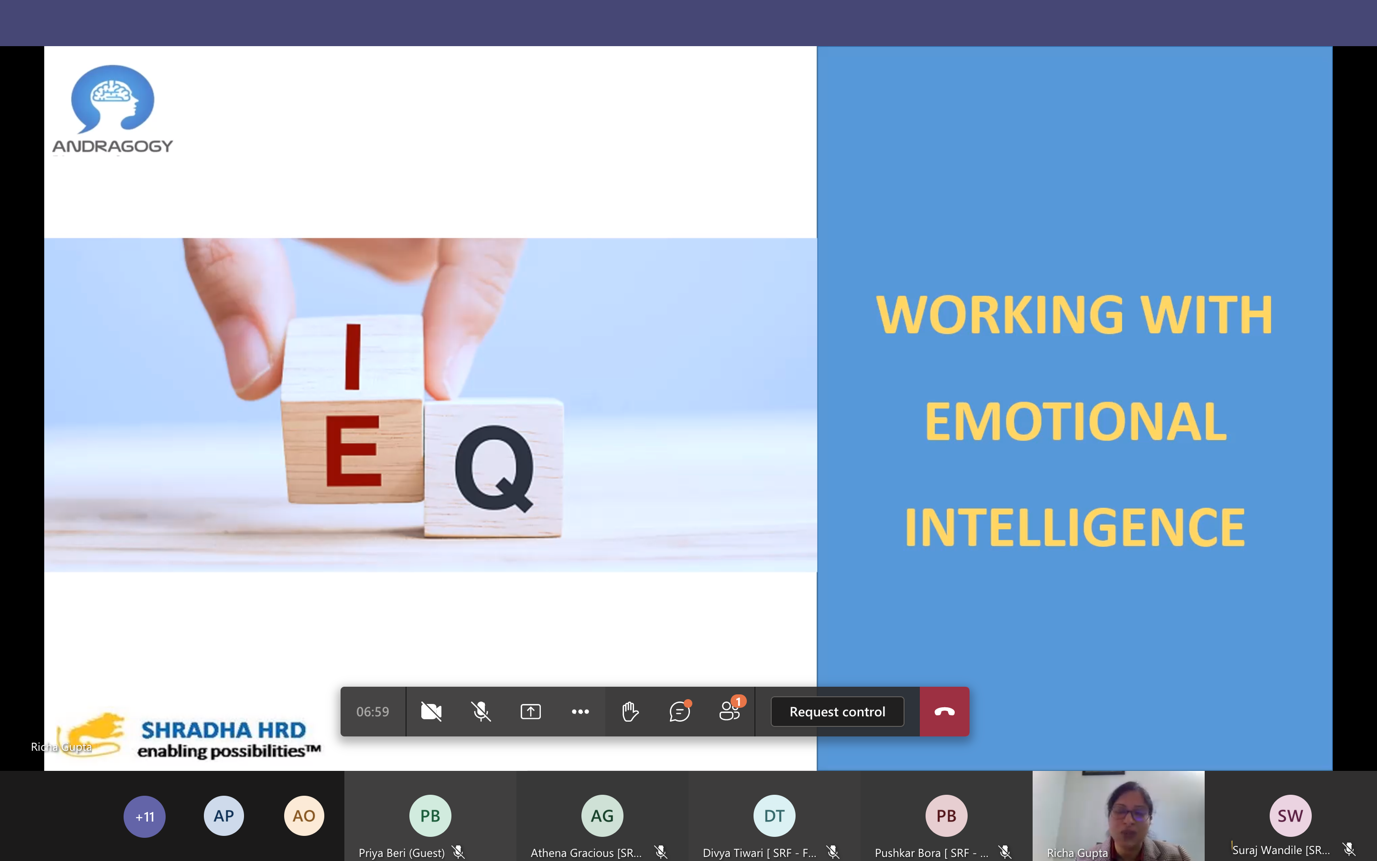
The Result: As this was an extended learning intervention, we heard powerful and heart-warming stories and anecdotes of participants applying the principles discussed during classroom learning, with their team members.
Truly gratifying
The Landscape: The target audience for this session was the entire Human Resource team of one of the largest banks in India. The problem statement was interesting. The Head of the team wanted his team members to develop the capability to look at large masses of data, analyze it, be able to draw meaningful insights from it and then present to the top management.

Currently masses of data was copy pasted onto presentations and downloaded. This form of presentation did not help top management draw insights and take necessary action, either to course correct or look at alternative solutions
The Solution: The Human Resources department had several sub processes within it, each generating their unique data. We structured a program that focused on the fundamental principles of data analysis and viewing data to draw out insights. The idea was to help empower participants to
1. Analyze data, keeping in mind, the utility to business
2. Create a structured wire frame with clear goals and an easily understandable format to present data insights
3. Build a compelling narrative to present your data

The Result : Participants were able to review their current presentation style, study industry best practices on presenting data with insights and implement using workplace situations. They now had a clear template on reviewing, analyzing and presenting data using elements of story telling. The feedback from their managers, post the program was that there was a marked change in participant’s ability to structure and present data meaningfully.
The Landscape: One of the top three Tech companies in India have a clear mandate from the leadership team, to build a more diverse and inclusive culture. A mindset that makes this goal challenging is the Unconscious Biases all of us carry. This was coming during several employee engagement conversations and surveys. Executives and Managers felt they were at the receiving end of different biases, both conscious and unconscious

The Solution: As a part of an organization wide initiative to develop an awareness of biases and how to deal with these biases, we partnered with the learning team to structure a program that was designed to help individual contributors and managers
1. Reflect on the origin of unconscious biases
2. Relate to different biases they encounter at the workplace
3. Use simple techniques to reduce their own internal biases
4. Apply strategies on how to deal with biases at work

The Result: One of the principal outcomes was that Managers felt heard. They were able to discuss their challenges around biases they faced, in a safe forum and brainstorm on the best ways to deal with these biases.
Another key take away was a definite sensitization towards managers’ own internal biases and how it affects their decision-making processes and behavior with their team members. There were clear commitments made on practicing techniques that would reduce unconscious biases and help managers work with more awareness.
